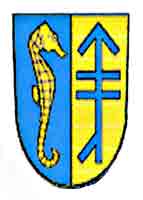
The island of Hiddensee - community "Seebad Insel Hiddensee" - with its breathtaking landscape is one of the most beautiful Baltic islands and therefore highly appreciated by tourists. Located off the western coast of Ruegen island, it has beautiful sandy beaches and consists of the higher elevations at the Dornbusch (max. 72m above sea level), the lowlands extending to the Gellen, the old and new Bessin and the Faehrinsel (bird sanctuary). The island's overall length is approx. 17km and it covers approx. 19sq.km. Vast heathlands, dune areas and moor meadows can be found in the lowlands. Major areas of this part of the island have an average altitude of only 1 to 2m above sea level and must be protected from flooding.
The four villages of the island - Grieben, Kloster, Vitte and Neuendorf - have specialised in tourism. Since 1995, these villages joint together as the community "Seebad Hiddensee." The most northern village, Kloster, was named after a monastery (in German - Kloster) which was founded there in 1296. The gates and some remnants of the walls can still be seen today.
The island's church was built during the 1780s on the remains of a former chapel and was preserved in its simple style to his day. The Dornbusch is one of the most popular hiking destinations. It provides a complete panorama view from the lighthouse which was built on the Schluckwieck hill (highest hill on the Dornbusch, altitude 72m) in 1888.
Depending on the season, larger passenger boats call frequently at Hiddensee from Schaprode (Ruegen), Wiek (Ruegen), Breege (Ruegen) and Stralsund. The island can also be reached via sea-taxi from Schaprode (Ruegen).
Text and photos by R.R. R.R.
20 Quadratkilometer Fläche machen die Insel Ummanz (ab 1341 Eigentum des „Heilgeist-Hospitals“ Stralsund) zur viertgrößten Insel Mecklenburg-Vorpommerns. Sie liegt im Nationalpark Vorpommersche Boddenlandschaft und ist von Rügen aus über eine 250 m lange Brücke erreichbar. Trotz vorhandener Deiche kann Hochwasser durchaus gefährlich für Mensch (2007 – 661 Einwohner), Hab und Gut werden.
Hauptort ist das Dorf Waase mit seiner sehenswerten Kirche, dem kleinen Fischereihafen und dem Nationalparkhaus (ehemaliges Küsterhaus). Nahe gelegene Bauernhöfe mit gastronomischen Einrichtungen und Erlebnisbereichen sind sicher auch einen Besuch wert.
Erholungssuchende wissen zudem den Zeltplatz und das schöne Surfrevier zu schätzen. Da die Insel auch ein Rastplatz für Kraniche ist, kommen in der Zeit des Vogelzuges ebenso Natur- und Fotofreunde auf ihre Kosten.